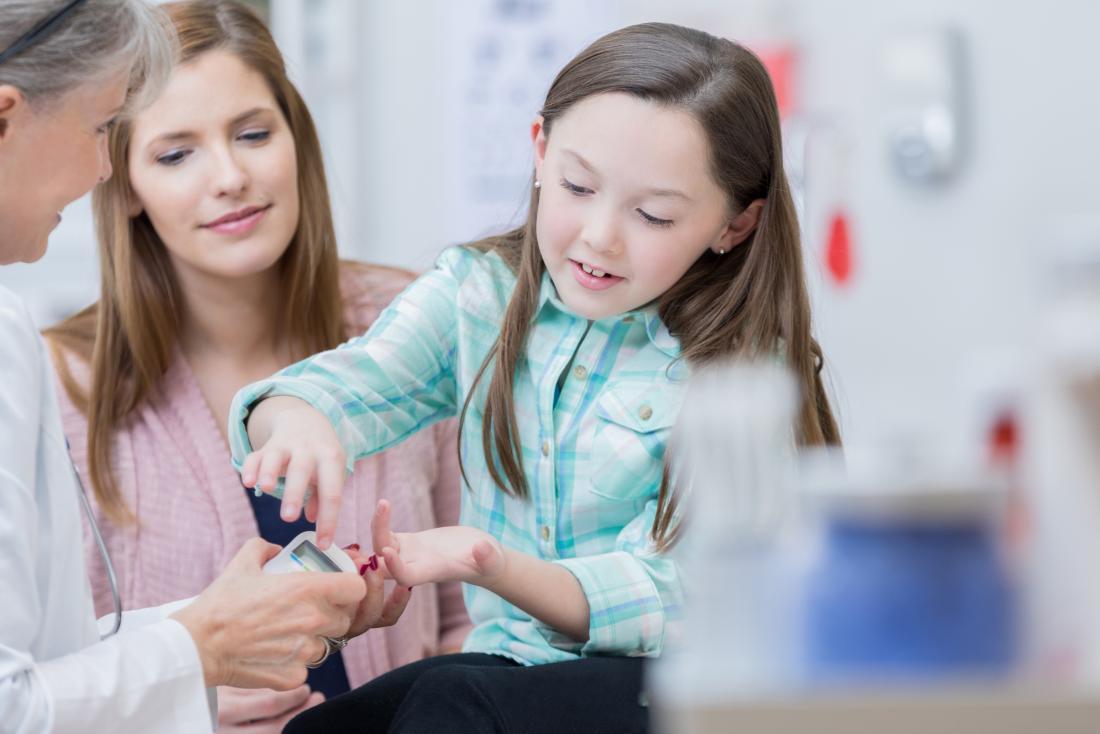According to a 2017 report by the National Institutes of Health, about 208,000 kids and teens under the age of 20 in the United States were diagnosed with either type 2 or type 1 diabetes. The percentage of affected kids only seems to increase every year. Young children with diabetes have a higher tendency of developing other health challenges. An early diagnosis can help recognize the symptoms in children to ensure better treatment.
Type 1 Diabetes in Children
Diabetes is a chronic condition that affects the ability of the body to process insulin. The Kipancreas of children with type 1 diabetes or juvenile diabetes ceases to produce insulin. Lower insulin levels restrict the movement of sugar from the bloodstream into the cells thereby resulting in higher levels of blood sugar.
The primary treatment for type 1 diabetes in children involves regular monitoring of blood sugar and the lifelong use of insulin. Dietary changes and exercise management also help in stabilizing blood sugar levels. Type 1 diabetes usually starts early during childhood or adolescence.
Type 2 Diabetes in Children
Children are less likely to develop type 2 diabetes. But the condition may occur because of lower insulin levels when glucose accumulates in the bloodstream. Type 2 diabetes can be managed through dietary changes, regular exercise, medication, and maintaining a healthy weight.
Symptoms of Type 1 Diabetes in Children
Children and adolescents may reflect various common symptoms indicating type 1 diabetes. These include hunger, weight loss, increased thirst, frequent urination, fatigue, irritability, blurred vision, and a fruity smell in the breath. In some cases, girls may have a yeast infection.
Primarily you should watch for following 4 Ts or four major indicative symptoms of type 1 diabetes in children:
- Toilet – Frequent urge of using the bathroom, heavy diapers in infants, or bedwetting.
- Thirsty – Being unable to quench thirst or unusually drinking more fluids.
- Thinner – Losing weight fast.
- Tired – Feeling unusually more tired.
Symptoms of Type 2 Diabetes in Children
Children with type 2 diabetes have several complications including frequent urge to urinate especially during the night, tiredness, increased thirst, unexplained weight loss, slower healing of wounds and cuts, itching around the genitals due to yeast infection, and blurred vision. Some noticeable signs of insulin resistance in children include the appearance of dark, velvety patches called acanthosis nigricans all over the skin and polycystic ovarian syndrome (PCOS).
Symptoms for type 1 diabetes develop rapidly while those for type 2 diabetes develop more slowly over months or years before being diagnosed. You should take your children to the doctor when you notice any of the warning signs like increased thirst, more tiredness, or frequent urination. Be aware of the possible signs and symptoms to get an early diagnosis and appropriate treatment.
Undiagnosed type 1 diabetes may lead to other severe complications like diabetic ketoacidosis (DKA). You should encourage your children to make healthy dietary choices as many children with DKA develop type 2 diabetes over time. Other complications with type 1 diabetes include respiratory system infections, perineal candidiasis, gastroenteritis, urinary tract infection, stomatitis, and appendicitis.
Certain complications with type 2 diabetes include kidney and eye diseases, high blood pressure, elevated cholesterol levels, and blood vessel diseases. Many times, type 2 diabetes is combined with obesity in children which makes it crucial to manage overweight and detect symptoms early in young people. Children are also encouraged to make healthy dietary choices and pursue a regular exercise regimen.
Your doctor may perform a urine test and a finger-prick blood test to measure sugar and blood glucose levels. You should get your children diagnosed for diabetes if they are overweight, have a family history of diabetes, belong to a high-risk ethnicity, or display signs of insulin resistance.

